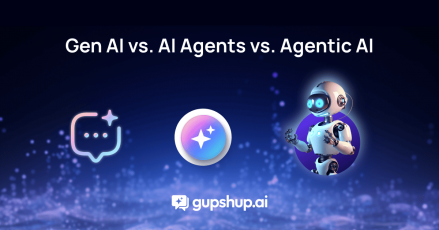We’ve all been there. We’ve visualized a great chatbot idea and basked in the glory of its success without writing the first few lines of the script. Although scripting is perceived to be a straightforward process, it can get complex and messy real quick if certain fundamental characteristics are overlooked. Let’s look at the features of a great chatbot script.
Scripting is 80% thinking and 20% execution
The Intro
Developers must be aware of the greeting message that users view once they search your chatbot on Messenger because there are essentially two greeting messages.
- First there is the message that users see before pressing the “Get Started” button. This is the message that gives a user perspective on “what is the chatbot is all about?” Be precise and let your users know what your chat bot is programmed for, what can it do, and what to expect. This helps set them up for success.
- Secondly, there is the message that users view after clicking the “Get Started” button. This is essentially the first message that your chatbot communicates. Try to make it fun and organic instead of mechanical and methodical. The first message sets the tone and makes your users perceive your chatbot’s personality. You don’t want your users to think, “Oh great, yet another programmed and boring chatbot.” Instead, your users should be delighted and think “Wow! That’s a clever response, this bot must be interesting.” Also try adding emoticons to your script. You can find all the emoticons for messenger here.
The Flow
Once your users have an idea of what they are to expect from your chatbot, the journey ahead should make the users explore all the features of your chatbot. How to do that? You do that by defining the flow.
Your users should be well guided. Through the use of quick replies, carousels, and survey templates your users need to be set on a path that does not make them want to diverge from what you expect them to explore. Unless your bot is NLP enabled, it is critical that your bot has a well-defined structure. Otherwise your bot will have to resort to the dreaded fallback message of, “I am sorry I did not get that.”
Speaking of the flow, essentially the two most used reply types are quick replies and carousels. Apart from these, developers can also make use of the receipt template and a few others which have not been popular yet.
Quick Replies
Quick replies are the most efficient method to keep a chat bot script flowing. These bubbled messages act as indicators and disappear once clicked. Many of the popular chatbots heavily rely on quick replies.
Carousels
Carousels are the MOST ELABORATE means to communicate with your users. Carousels allow for more information on display via titles & subtitles. Also, unlike quick replies carousels do not disappear after a user interacts with it.
Facebook also provides other reply templates which have not quite become mainstream as of now. You can check out Facebook’s guide for more info.
The Journey
While it’s important to keep your users engaged, you should always give them a reason to come back. Popular chatbots prompt users with daily updates, but this strategy might be flawed as the user might not be interested or waiting for that update. A better way to tackle this is by reminding users that it’s been “X” days that they haven’t been active and the bot just wants to check up. This will surely help you build trust with your users and encourage them to keep the conversation flowing.
Strategies To Keep Users Engaged
● While it’s important to keep users engaged, it’s more critical to keep them entertained. Your bot should be sending out pictures, GIFS and videos to users periodically. Depending on the type of message you send, users will form a relatability with your bot.
● Send daily reminders to users prompting them into an active discussion. Some of the popular strategies include asking for an opinion rather than submitting a piece of information to users
● Stick to a personality — While bots in themselves will always be judged to “not be intelligent enough” by humans, that shouldn’t deter developers from giving a personality to their bots. How your bot responds matters more than what your bot responds. Add emoticons. Use messages like “wait a second,” “I will get that for in a moment” or “This is what I could find” before giving the actual response. This helps users “accept” the bot subconsciously!





